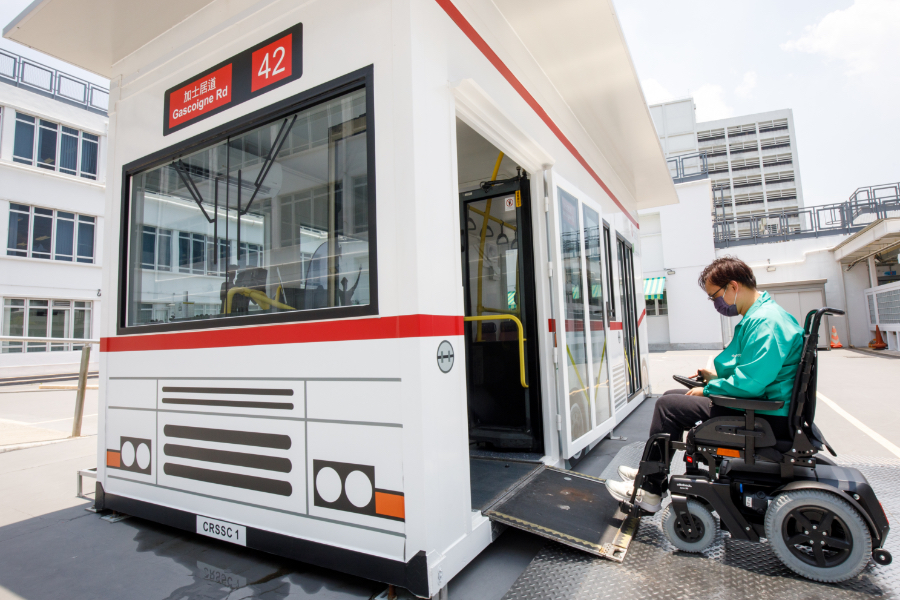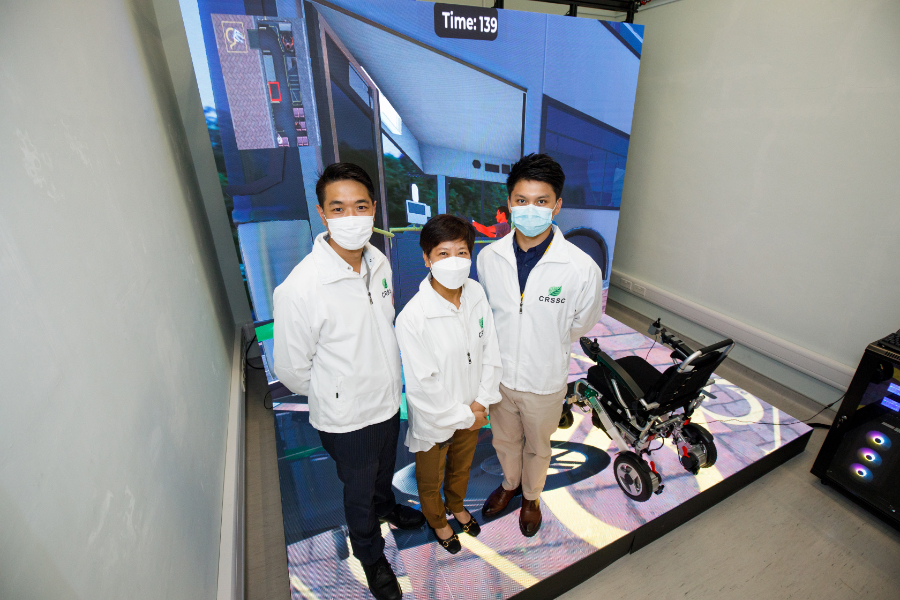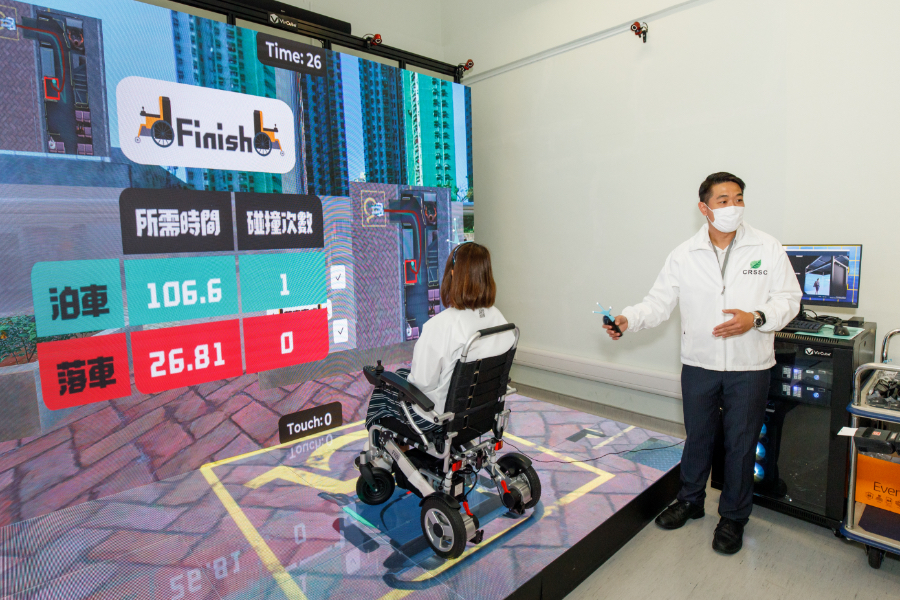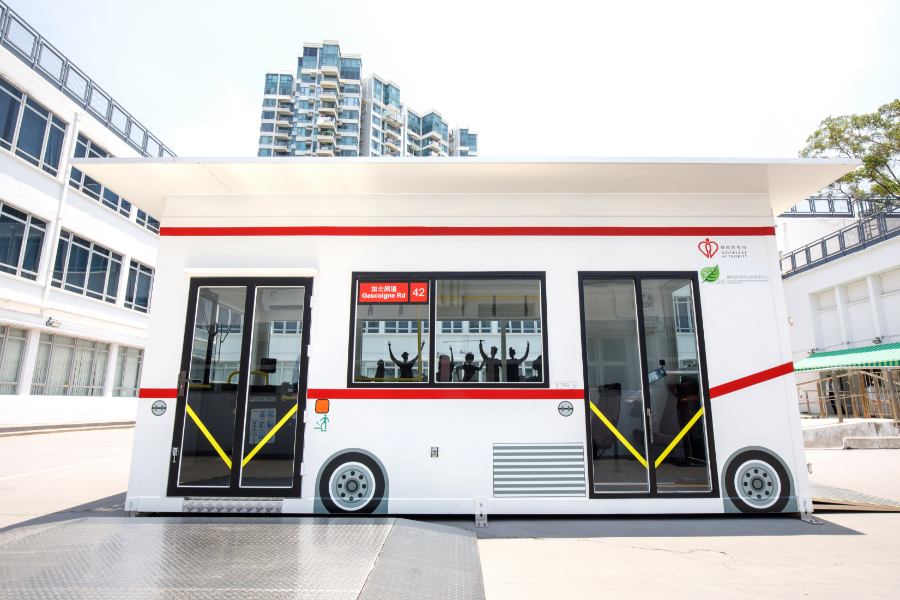Advanced technology introduced in rehabilitation services – a boon for disabled patients
Not only does technology change the world, but also contributes to
the development of rehabilitation services. The Community Rehabilitation Service Support
Centre (CRSSC) of the Hospital Authority (HA) was established five years ago to apply
the innovative and cross-disciplinary technological tools and techniques for disabled
patients with special or complex needs, helping them to regain their hope in life. Last
year, the centre moved from the temporary premises at Kowloon Hospital to the
Multi-service Centre of the Queen Elizabeth Hospital, providing more space and resources
for the development of rehabilitation training according to patients’ needs. A variety
of intelligent aids has hence been developed.

Dr Serena Ng, Centre Head of CRSSC, states that the
demand for the rehabilitation services involving advanced technology is rising. The
opening of the new centre expands the service capacity. Currently, the centre provides
about 1,500 quotas per year and only accepts referrals of cases with special needs from
hospitals, of which more than 100 cases require specially designed or modified auxiliary
equipment. “Patients with quadriplegia and traumatic brain injury were once unable to
find suitable aids for locomotion and could only stay at home. With the development of
technology, they now have the opportunities to step into the community and enhance their
life quality with the assistance of advanced technology. For instance, there are virtual
reality (VR) programmes in the centre to enhance the effectiveness of training.
Technologies such as face recognition control system are also introduced to enhance the
communication of patients with the outside world. All these latest technologies
contribute to safe independent living for disabilities and fulfill their daily
needs.”

Wheelchair special training
Electric wheelchairs offer a helping hand for disabled patients to
rejoin social life. Apart from modifying or selecting wheelchair for individual complex
case, the ‘Wheelchair Special Unit’ in the CRSSC also provides outdoor and indoor
assessment and skill enhancement training. “Many wheelchair users are concerned about
taking public transportation due to unexpected situations. The special training focuses
on their wheelchair controlling skills, as well as managing and repairing their
wheelchairs to cope with various scenarios, such as out of battery or malfunction. It
helps patients adapt to the community easier,” says Dr Serena Ng.
Marko Chan, Senior Occupational Therapist of CRSSC, indicates the wheelchair training is divided into two parts, with VR training as the first part. Patients will be situated in different virtual scenarios, such as on a bus or in a lift. This allows them to practise the operation of wheelchairs repetitively and reduces their risks of hitting passers-by or objects in the real-life environment. Besides, the VR feedback function helps analyse patients’ performance during the training for further improvement.
Marko Chan, Senior Occupational Therapist of CRSSC, indicates the wheelchair training is divided into two parts, with VR training as the first part. Patients will be situated in different virtual scenarios, such as on a bus or in a lift. This allows them to practise the operation of wheelchairs repetitively and reduces their risks of hitting passers-by or objects in the real-life environment. Besides, the VR feedback function helps analyse patients’ performance during the training for further improvement.

The second part is practical training. The centre designed the first
1:1 scale simulated bus by converting a container in Hong Kong for training. Real bus
accessories like armrests, seats and wheelchair position have been installed. With the
introduction of the simulated bus, wheelchair users could have training in a setting
that is close to the actual environment.
